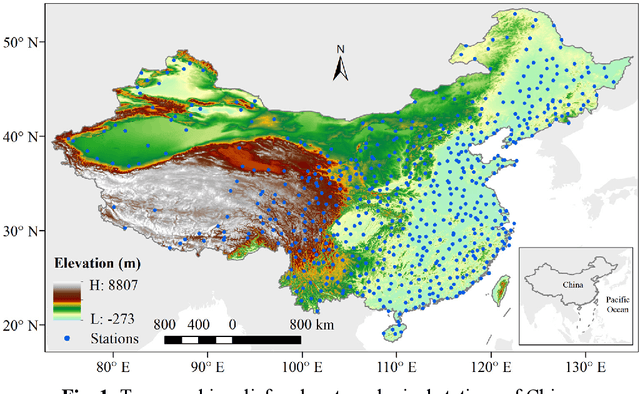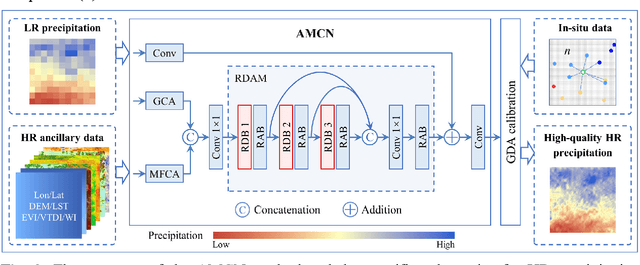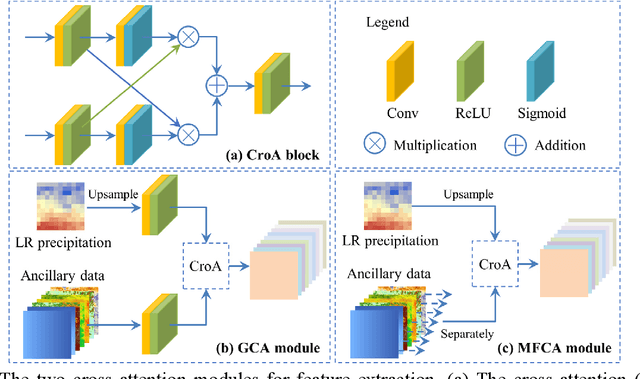Liupeng Lin
A physics-constrained machine learning method for mapping gapless land surface temperature
Jul 03, 2023Abstract:More accurate, spatio-temporally, and physically consistent LST estimation has been a main interest in Earth system research. Developing physics-driven mechanism models and data-driven machine learning (ML) models are two major paradigms for gapless LST estimation, which have their respective advantages and disadvantages. In this paper, a physics-constrained ML model, which combines the strengths in the mechanism model and ML model, is proposed to generate gapless LST with physical meanings and high accuracy. The hybrid model employs ML as the primary architecture, under which the input variable physical constraints are incorporated to enhance the interpretability and extrapolation ability of the model. Specifically, the light gradient-boosting machine (LGBM) model, which uses only remote sensing data as input, serves as the pure ML model. Physical constraints (PCs) are coupled by further incorporating key Community Land Model (CLM) forcing data (cause) and CLM simulation data (effect) as inputs into the LGBM model. This integration forms the PC-LGBM model, which incorporates surface energy balance (SEB) constraints underlying the data in CLM-LST modeling within a biophysical framework. Compared with a pure physical method and pure ML methods, the PC-LGBM model improves the prediction accuracy and physical interpretability of LST. It also demonstrates a good extrapolation ability for the responses to extreme weather cases, suggesting that the PC-LGBM model enables not only empirical learning from data but also rationally derived from theory. The proposed method represents an innovative way to map accurate and physically interpretable gapless LST, and could provide insights to accelerate knowledge discovery in land surface processes and data mining in geographical parameter estimation.
An attention mechanism based convolutional network for satellite precipitation downscaling over China
Mar 28, 2022



Abstract:Precipitation is a key part of hydrological circulation and is a sensitive indicator of climate change. The Integrated Multi-satellitE Retrievals for the Global Precipitation Measurement (GPM) mission (IMERG) datasets are widely used for global and regional precipitation investigations. However, their local application is limited by the relatively coarse spatial resolution. Therefore, in this paper, an attention mechanism based convolutional network (AMCN) is proposed to downscale GPM IMERG monthly precipitation data. The proposed method is an end-to-end network, which consists of a global cross-attention module, a multi-factor cross-attention module, and a residual convolutional module, comprehensively considering the potential relationships between precipitation and complicated surface characteristics. In addition, a degradation loss function based on low-resolution precipitation is designed to physically constrain the network training, to improve the robustness of the proposed network under different time and scale variations. The experiments demonstrate that the proposed network significantly outperforms three baseline methods. Finally, a geographic difference analysis method is introduced to further improve the downscaled results by incorporating in-situ measurements for high-quality and fine-scale precipitation estimation.
Fully Polarimetric SAR and Single-Polarization SAR Image Fusion Network
Jul 18, 2021



Abstract:The data fusion technology aims to aggregate the characteristics of different data and obtain products with multiple data advantages. To solves the problem of reduced resolution of PolSAR images due to system limitations, we propose a fully polarimetric synthetic aperture radar (PolSAR) images and single-polarization synthetic aperture radar SAR (SinSAR) images fusion network to generate high-resolution PolSAR (HR-PolSAR) images. To take advantage of the polarimetric information of the low-resolution PolSAR (LR-PolSAR) image and the spatial information of the high-resolution single-polarization SAR (HR-SinSAR) image, we propose a fusion framework for joint LR-PolSAR image and HR-SinSAR image and design a cross-attention mechanism to extract features from the joint input data. Besides, based on the physical imaging mechanism, we designed the PolSAR polarimetric loss function for constrained network training. The experimental results confirm the superiority of fusion network over traditional algorithms. The average PSNR is increased by more than 3.6db, and the average MAE is reduced to less than 0.07. Experiments on polarimetric decomposition and polarimetric signature show that it maintains polarimetric information well.
 Add to Chrome
Add to Chrome Add to Firefox
Add to Firefox Add to Edge
Add to Edge